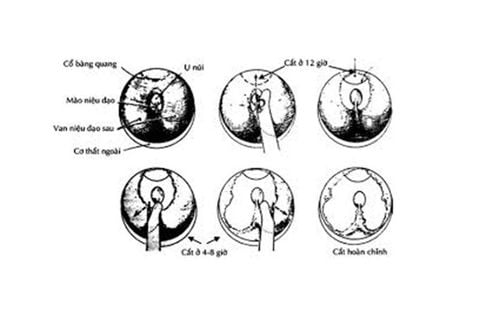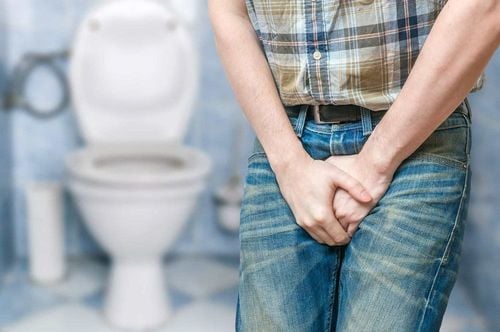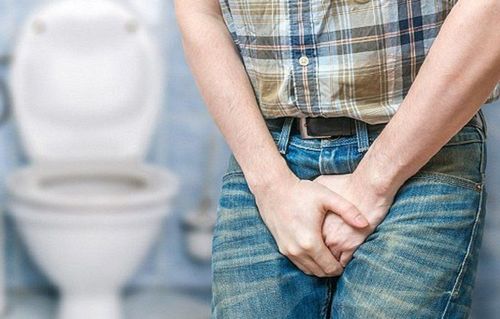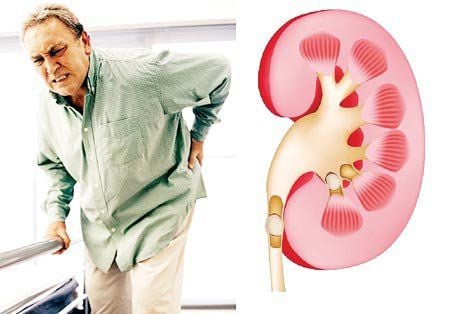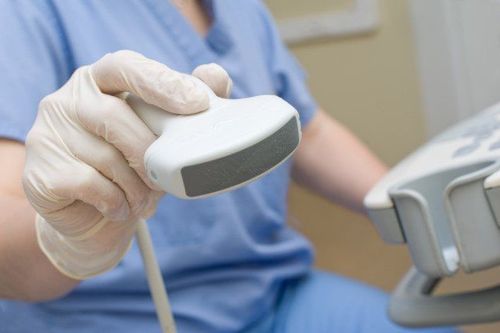This is an automatically translated article.
Urinary incontinence in children, also known as urinary incontinence, is a condition that is difficult to control, causing trouble in children's daily activities, but it also carries potential medical risks.1. What is childhood urinary incontinence?
Urinary incontinence in children is the inability to control urination, urine leaking out of his own will. Normally, when having urinary incontinence, a day often urinates more than 8 times a day but each time the amount of urine is very little, even leaking out of the pants without having time to go to the toilet.
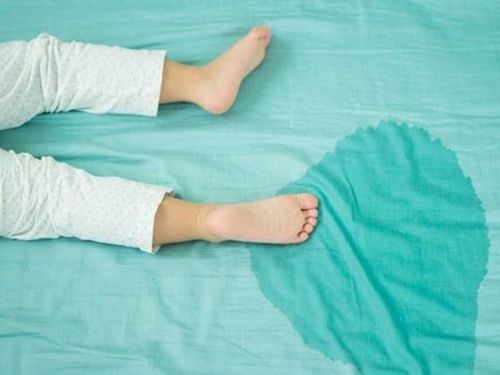
Tiểu không tự chủ ở trẻ em là tình trạng nước tiểu rỉ ra ngoài ý muốn của mình
2. At what age do children often experience urinary incontinence in children?
Urinary incontinence can affect anyone. Both young and old are affected. So are children; However, for children, urinary incontinence in children is divided into 2 groups: Children under 6 years old and children 6-12 years old.2.1 Group of children under 6 years old
In this age group, children's bedwetting and urinary incontinence occur frequently, especially at night. However, according to experts, with this age group, urinary incontinence in children is not a cause for concern because children's organs are not fully developed, including the bladder, so it is not a pathology.2.2 Group of children from 6 to 12 years old
If a child between the ages of 6 and 12 years old has a lot of bedwetting and incontinence, this may be a sign of pathology because at this age the child's organs have fully developed, ensuring functions.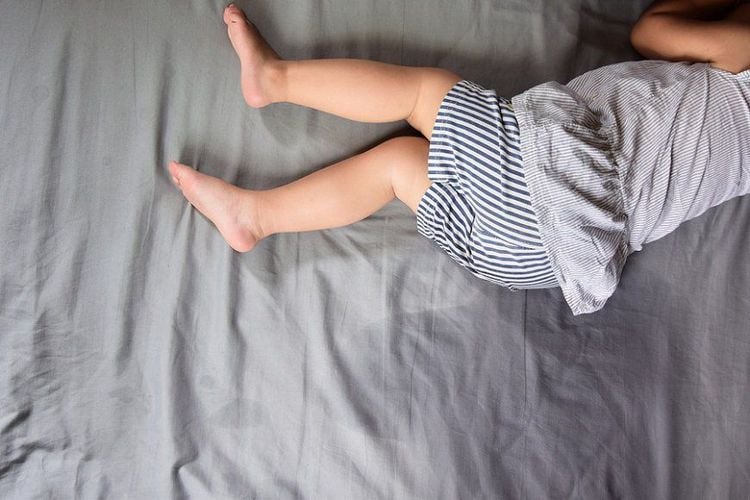
Đái dầm ở độ tuổi từ 6-12 tuổi là dấu hiệu của bệnh lý
3. Classification of urinary incontinence in children
Urinary incontinence in children is divided into 2 types: primary and secondary.
3.1 Primary bedwetting
A condition in which the child is able to control urination during the day but has not been able to consistently control and stay dry at night for at least 6 months. This is the most common form of bedwetting that occurs in children.
3.2 Secondary bedwetting
The child is completely dry at night for at least 6 months, but then the child has a lot of bedwetting. It is necessary to find the cause in order to treat the child.
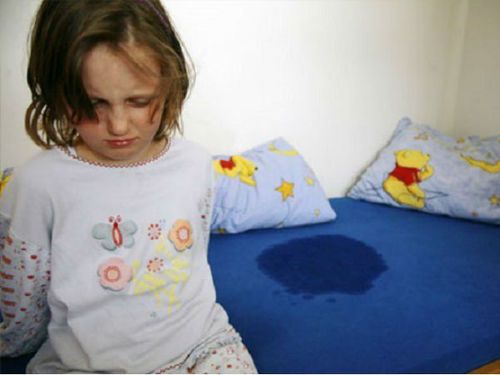
Đái dầm thứ phát cần phải tìm ra nguyên nhân để điều trị cho trẻ.
4. Causes of urinary incontinence in children
There are many causes of urinary incontinence in children. Among them are the main causes of bedwetting in children as follows:
4.1 Heredity
Research has shown that the cause of frequent bedwetting in children is often genetic. If both parents used to wet the bed a lot as children, the children's risk of bedwetting increases to 77%.
4.2 Decreased bladder capacity
The bladder capacity in children with frequent bedwetting is often lower than that of their peers. When the bladder is small, the child has to urinate more often. Sleeping at night, the ability to hold urine throughout the night is also lower. There are also cases where a child's bladder is normal in size but feels like the bladder is full before it is actually full. this is medically known as functional volume reduction.4.3 Increased nocturnal urine production
At night the brain produces a hormone vasopressin. This hormone works to increase water reabsorption into the blood stream, thereby helping to reduce the amount of urine produced by the kidneys. Reducing urine production at night helps people sleep until morning without having to get up to urinate. Therefore, children with bedwetting a lot at night may be due to insufficient levels of this hormone.
4.4 Can't wake up
Many people think that children wet the bed while they are in deep sleep. Scientists discovered that some children do not respond to the body's internal signals when sleeping, leading to bedwetting children's inability to wake up when the bladder reaches its maximum capacity.
4.5 Constipation
Most parents pay little attention to their child's peeing once the child has learned to sit on the potty. When the rectum is full, stool can press against the bladder, causing it to 'misunderstand' and send nerve signals to the brain just like when the bladder is full.
When the rectum is full of stool, it will reduce the capacity of the bladder or prevent the child from fully emptying this organ. Treating constipation can help relieve or heal bed-wetting.
4.6 Psychological factors
Psychological discomfort, stress is also the cause of urinary incontinence in children
4.7 Improper eating
Children eat too much food that stimulates the bladder or drink too much water at night before going to bed leading to urinary incontinence in children.
In addition, urinary incontinence in children is also a sign of a number of other diseases.
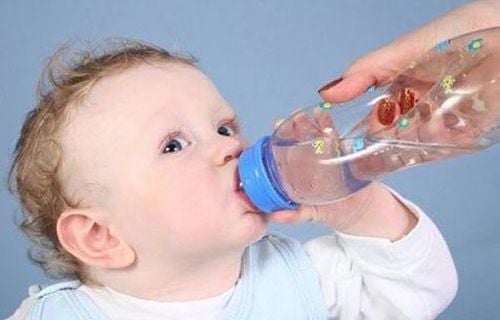
Cho trẻ uống quá nhiều nước về đêm dẫn tới tình trạng tiểu không tự chủ
5. How to overcome urinary incontinence in children?
Parents should pay attention to reduce bed-wetting in children by:
Massaging the lower abdomen with olive oil will help control the bladder, improve urinary incontinence in children Drinking warm milk, honey Honey, will help limit urination, reduce urinary incontinence in children Do not let children drink a lot of water or eat foods that stimulate the bladder such as caffeine, chocolate, sweets, in the evening. Let your baby urinate before going to bed Practice for children to have a habit of going to the toilet at the same time. Do not scold the child when he or she wets the bed a lot because it will scare the child. If you notice any unusual problems in your child, you should take your baby to see a doctor and consult a specialist.
Please dial HOTLINE for more information or register for an appointment HERE. Download MyVinmec app to make appointments faster and to manage your bookings easily.





